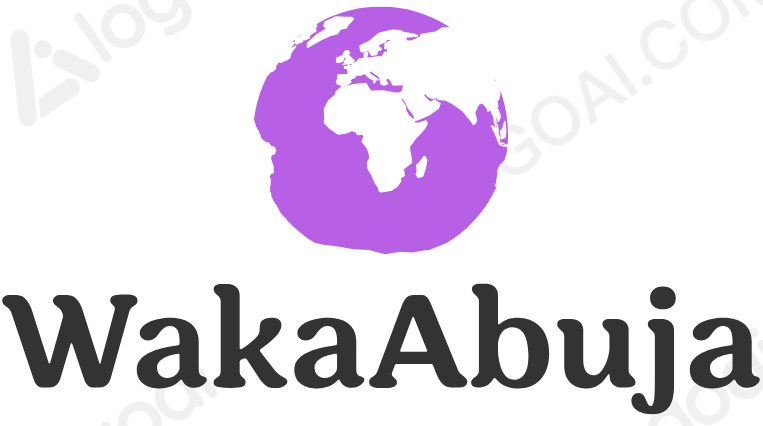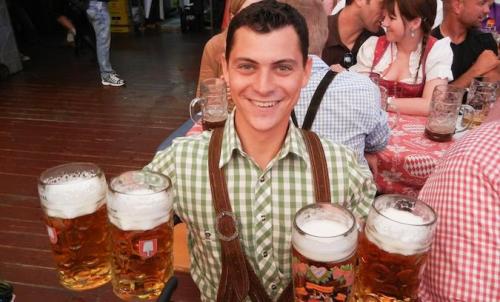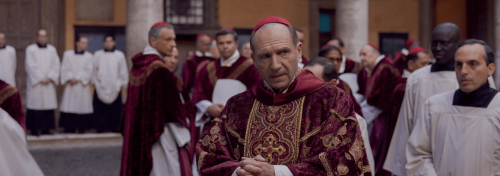Getting the Most Out of Oktoberfest
The Oktoberfest festival is one of the most iconic festivals in the world, attracting millions of visitors every fall to Munich, Germany. It’s essential to know how to navigate the chaos and fun that comes with the world’s largest beer festival, whether you’re a first-timer or an experienced attendee. The following guide will provide you with everything you need to know about Oktoberfest, including tips on costs, what to expect, how to make table reservations, where to stay, and how to get your Oktoberfest outfit.
What is Oktoberfest?
An Oktoberfest is a traditional Bavarian folk festival that began in 1810 to celebrate King Ludwig’s marriage to Princess Therese. In addition to traditional German food, music, and cultural activities, the festival has grown into an international spectacle.
Oktoberfest takes place annually in Munich from mid-September to the first Sunday in October. There are millions of people who visit the city to experience Bavarian hospitality, drink beer from large steins, and eat traditional foods such as pretzels, bratwurst, and roast chicken.
Key Takeaway:
Oktoberfest is more than just a beer festival; it’s a celebration of Bavarian culture, steeped in history, tradition, and fun.
What to Expect at Oktoberfest
Oktoberfest is held at the Theresienwiese fairgrounds, known as the “Wiesn.” The area is filled with giant beer tents, amusement rides, food stalls, and music venues. Each tent is operated by one of Munich’s six main breweries and has its own atmosphere, beer, and food offerings.
Here’s what you can expect:
The Tents:
- There are 14 large beer tents and around 20 smaller ones.
- Each tent has a different theme, vibe, and capacity (some hold over 10,000 people!).
- Most tents serve 1-liter steins of beer, brewed specifically for Oktoberfest by Munich’s breweries, along with hearty Bavarian cuisine.
The Food:
- Expect delicious traditional dishes like Würstl (sausages), Hendl (roast chicken), Schweinshaxe (pork knuckle), Brezn (pretzels), and Käsespätzle (cheesy noodles).
- Prices range from €10 to €15 for a meal, with snacks like pretzels costing around €5.
The Beer:
- The beer at Oktoberfest is specially brewed for the festival. It’s a Märzen-style lager, slightly stronger than regular beer, with an ABV of around 6%.
- Each beer costs between €12 and €14 for a 1-liter stein.
Entertainment:
- Apart from beer and food, Oktoberfest features lively music, from traditional Bavarian brass bands to modern pop hits. Each tent has its own band, keeping the festive atmosphere going all day and night.
- You can also enjoy amusement park rides, games, and parades.
Key Takeaway:
Oktoberfest is more than just drinking beer. It’s a full-on cultural experience with music, food, and amusement.
How Much Does Oktoberfest Cost?
Attending Oktoberfest can range from relatively affordable to quite expensive, depending on your plans. Here’s a breakdown of the expected costs:
Entrance Fee:
There’s no entrance fee to get into the Oktoberfest grounds or the beer tents. However, be prepared to spend on food, drinks, and entertainment.
Beer Prices:
Expect to pay between €12 and €14 per 1-liter stein of beer.
Food Prices:
Meals inside the tents cost between €10 and €20, depending on what you order. Snacks like pretzels are around €5, and smaller items like sausages cost between €6 and €8.
Amusement Rides:
Rides and games vary in price but generally cost between €3 and €5 per ride.
Accommodations:
Accommodations during Oktoberfest can be expensive, with hotels booking out months in advance. Budget around €100–€300 per night for a mid-range hotel, with more luxurious options going up to €500 per night or more. Hostels and camping grounds can offer more affordable options, with prices ranging from €50–€100 per night.
Outfit Costs:
Traditional Oktoberfest outfits (Lederhosen for men and dirndls for women) range in price. You can buy basic outfits for around €50, but high-quality ones can cost over €200.
Total Costs:
For a budget Oktoberfest experience, plan to spend at least €100–€150 per day. If you’re going for a more comfortable or luxurious trip, expect to spend €200–€500 per day.
Key Takeaway:
Oktoberfest can be expensive, but there are ways to budget and save. Planning ahead and setting a daily spending limit can help you control your expenses.
A List of Oktoberfest Tents
Here’s a quick guide to some of the most popular Oktoberfest tents:
1. Schottenhamel
- Capacity: 10,000+
- Vibe: The official opening tent of Oktoberfest, Schottenhamel, is where the Mayor taps the first keg. It’s popular with young locals and has a lively, youthful atmosphere.
2. Hofbräu Festzelt
- Capacity: 10,000+
- Vibe: Hofbräu is one of the most famous tents, frequented by international visitors. It’s known for its lively parties, international crowd, and open-standing area.
3. Augustiner Festhalle
- Capacity: 8,000+
- Vibe: Augustiner is a favorite among locals, serving some of the best beer from Munich’s oldest brewery. The tent is more laid-back and family-friendly than others.
4. Käfers Wies’n-Schänke
- Capacity: 3,000+
- Vibe: A smaller, upscale tent popular with celebrities and Munich’s elite. It’s one of the few tents open later than the others, making it a popular after-hours destination.
5. Paulaner Bräurosl
- Capacity: 6,000+
- Vibe: Known for its friendly and welcoming atmosphere, this tent is famous for its yodelers and traditional Bavarian bands.
Key Takeaway:
Each tent offers a unique experience. Whether you’re looking for a wild party or a more laid-back atmosphere, there’s a tent for everyone at Oktoberfest.
How to Make Table Reservations at Oktoberfest
Table reservations are essential if you want to guarantee a seat, especially during the evenings and weekends when the tents are packed. Here’s how to secure a table:
1. Book Early:
Reservations open as early as January or February for the upcoming Oktoberfest. Popular tents book out months in advance, so plan ahead.
2. Minimum Group Size:
Most tents require a reservation for a minimum of 8-10 people. If you’re traveling solo or as a small group, you can often join other groups at communal tables.
3. Deposit and pre-payment:
When you reserve a table, you’ll likely need to prepay for a certain number of beers and meals. This can range from €25 to €60 per person, depending on the tent.
4. Reservation Confirmation:
Once your reservation is confirmed, you’ll receive a voucher. Make sure to bring this with you, as you’ll need it to claim your table and pre-paid items.
5. Walk-ins:
If you didn’t make a reservation, don’t worry. Many tents hold a percentage of their tables for walk-ins, but you’ll need to arrive early (before noon) to grab a spot.
Key Takeaway:
If you want a guaranteed seat, book your table months in advance. For spontaneous visits, plan to arrive early to snag a walk-in table.
Where to Stay at Oktoberfest
Finding accommodations during Oktoberfest can be challenging due to the large number of visitors. Here are some options:
1. Hotels:
- Mid-Range Hotels: Expect to pay around €150–€300 per night. Hotels in central Munich, such as Hotel Torbräu or Hotel Platzl, offer convenient access to the festival.
- Luxury Hotels: If you’re looking for something more luxurious, the Bayerischer Hof or Hotel Vier Jahreszeiten Kempinski are iconic and offer excellent amenities, but prices can go upwards of €500 per night.
2. Hostels:
For budget-conscious travelers, hostels are a good option. Popular ones include Wombats City Hostel and Euro Youth Hotel, with prices around €50–€100 per night.
3. Airbnb:
Renting an apartment or room through Airbnb can provide a more comfortable, homey experience. Prices range from €80 to €300 per night, depending on the location and size.
4. Camping:
If you’re looking for a more affordable and adventurous option, several campsites around Munich offer camping specifically for Oktoberfest. Prices start at €15–€50 per night, but be prepared for cold weather in the evenings.
Key Takeaway:
Book your accommodations early! Hotels and hostels fill up quickly, so planning ahead will save you money and stress.
How to Get Your Oktoberfest Outfit
Wearing traditional Bavarian outfits is part of the Oktoberfest fun. Here’s how to get your Oktoberfest look:
1. Lederhosen (for men):
- Lederhosen are knee-length leather shorts, usually worn with a white shirt and suspenders.
- You can buy high-quality Lederhosen at stores like Angermaier or Ludwig & Therese, starting at €150. More affordable options are available at souvenir shops around Munich for €50–€100.
2. Dirndl (for women):
- A dirndl consists of a bodice, blouse, and full skirt. Traditionally, women wear their aprons tied in a specific way to indicate their relationship status (left for single, right for taken).
- A good-quality Dirndl can cost anywhere from €100 to €300, while more budget-friendly options are available for around €50–€80.
3. Renting Outfits:
If you’re only attending Oktoberfest once and don’t want to invest in an outfit, several shops in Munich offer outfit rentals. Prices range from €40 to €70 per day.
Key Takeaway:
Whether you buy or rent, dressing in traditional Bavarian outfits enhances the Oktoberfest experience. You can find outfits at a range of price points, so there’s something for everyone.
General Oktoberfest Tips
Here are some insider tips to make the most of your Oktoberfest experience:
1. Arrive Early:
If you don’t have a table reservation, arrive early (before noon) to secure a seat, especially on weekends.
2. Pace Yourself:
The beer at Oktoberfest is stronger than usual (around 6% ABV), so pace yourself and drink water in between beers.
3. Cash is King:
Most tents don’t accept credit cards, so make sure to bring enough cash to cover your drinks and meals.
4. Public Transport:
Munich’s public transport is excellent, with U-Bahn and S-Bahn stations near the Oktoberfest grounds. It’s much cheaper and easier than trying to find parking.
5. Safety First:
Keep an eye on your belongings and stick with your group. With so many people in one place, it’s easy to get separated or lose track of things.
Key Takeaway:
Prepare ahead of time, pace yourself, and always carry cash for a smooth Oktoberfest experience.
How to Visit Oktoberfest
If you’re traveling to Munich for Oktoberfest, here’s how to plan your trip:
1. Getting There:
Munich is well-connected by plane, train, and car. The Munich International Airport is about 30 minutes from the city center, and trains run frequently from major European cities.
2. Getting Around:
Munich’s public transport system (U-Bahn, S-Bahn, buses, and trams) is the best way to get around. It’s efficient, affordable, and easy to use.
3. Best Time to Visit:
The festival is busiest on weekends, so if you’re looking for a more relaxed experience, aim for weekdays. The opening and closing days are particularly festive, with special parades and events.
4. Cultural Etiquette:
Germans take their traditions seriously, so be respectful of Bavarian customs. Avoid getting too rowdy and follow the rules in the beer tents.
Key Takeaway:
Plan your visit to Oktoberfest around transportation, timing, and cultural awareness to ensure a smooth and enjoyable experience.
Frequently Asked Questions (FAQs)
1. When is Oktoberfest 2024?
Oktoberfest 2024 runs from September 21 to October 6.
2. Do I need tickets to enter Oktoberfest?
No, entrance to Oktoberfest and the beer tents is free. However, you’ll need to pay for food, drinks, and any reserved seating.
3. How can I make a table reservation?
You can book a table directly through the Oktoberfest tent websites. Reservations are usually for groups of 8–10 people and require prepayment for food and drinks.
4. What is the best day to visit Oktoberfest?
Weekdays are the best time to visit if you want to avoid the crowds. Tuesdays are family days, with discounts on rides and food.
5. Can I bring kids to Oktoberfest?
Yes, Oktoberfest is family-friendly during the day. There are even specific family tents and kid-friendly rides. However, children must leave the tents by 8 PM.
Final Thoughts
Oktoberfest is a once-in-a-lifetime experience that combines Bavarian culture, great beer, delicious food, and an unbeatable atmosphere. With this guide, you’ll be fully prepared to navigate the festival like a pro. From understanding the costs to making reservations, picking the perfect tent, and getting your traditional outfit, you’re now equipped with all the essential knowledge to enjoy the world’s largest beer festival. Prost!









